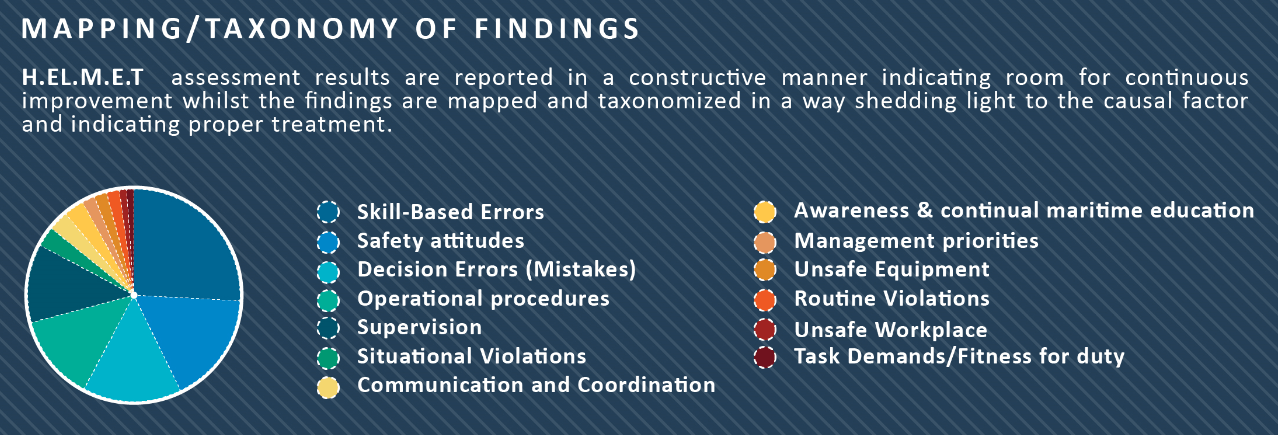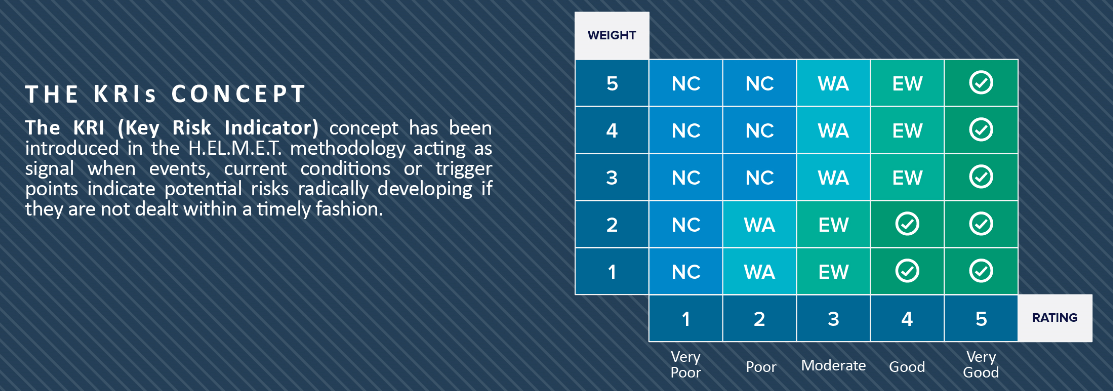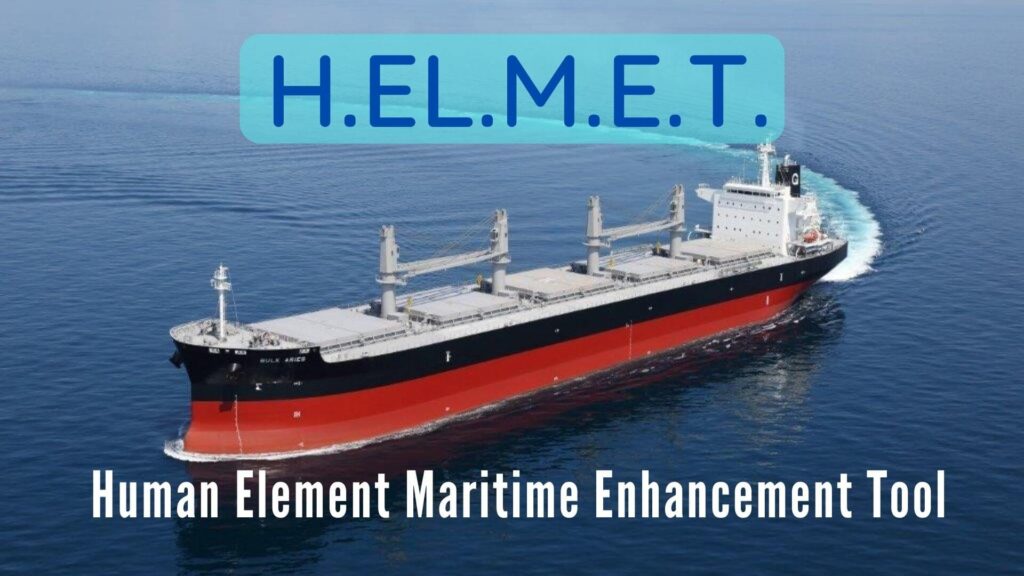
(www.MaritimeCyprus.com) In recent years, the shipping industry has started to recognise the importance of the human element.
This is underpinned by the numerous studies and reports published by a range of international organisations and experts in the field that acknowledge the pivotal role of the human element and its influence on the safety of ship operations.
In parallel, companies in the business of shipping are also recognising the need to recentre their safety culture around the human element, increasing their proactivity in nurturing a safe business culture.
However, although great evolutions in shipping safety management and risk assessment are being made with each passing decade, conventional audit results analysed by Prevention at Sea and the Centre of Excellence in Risk and Decision Sciences of the European University in Cyprus (CERIDES) have shown that the early warning signals of unsafe practices due to the human element are not being detected.
This is a worrying finding, since it is humans that sit as the beating heart of the shipping industry. It is humans who, every day, make hundreds of decisions that govern the operations of the 50,000+ merchant ships sailing 90% of the world’s cargo around the globe.
Conducting shipping business safely, of course, remains at the very core of our industry. Shipping should not be considered to be an unsafe industry, nor our approaches towards the upkeep of safety be thought of as being inefficient. However, the risk of safety incidents occurring, and their consequences are high in this industry. When a safety risk manifests in an incident, often the impact on cargo integrity, human life, or the environment is large.
As we head into an unprecedented phase of change, never has the human element been so important in the safe operation of ships. With fast-flowing new rules and requirements to contend with, seafarers and shipping companies are struggling to cope, even before the pressures of a global pandemic arrived at the end of 2019. The humans of the shipping industry, those onboard and ashore, need supportive guidance and tools that enable them to undertake the early detection of unsafe practices, before they get out of control.
What is the human element?
In the maritime context, the term human element embraces anything that influences the interaction between a human and any other human or system or machine aboard a ship.
In 1997, IMO adopted a resolution setting out its vision, principles and goals for the human element. They define that the human element is “a complex multi-dimensional issue that affects maritime safety, security and marine environmental protection involving the entire spectrum of human activities performed by ships' crews, shore-based management, regulatory bodies and others.”
However, the term ‘element’ is often misinterpreted as something that occurs on the sidelines, but this is definitely not the case. Humans are not simply an element like the weather. They are at the very center of the shipping business and their decisions affect safety tremendously.

The human influence
Records prove that more than 70% of accidents compromising maritime safety can be attributed to poor judgement, lack of common sense and critical thinking, miscommunication, and lack of shipping knowledge. All of which can be summarised under the term ‘human element’ failure.
In addition, the numerous audits and inspections carried out onboard ships and ashore every year, prove that incidents (accidents, ship rejection, detentions, off-hires, non-conformances etc) affecting smooth operations, frequently occur and are also attributed to the human element.
If these incidents are added to the aforementioned 70%, then the said percentage approaches a level of 85-90%. This suggests that the human element, as a critical aspect that triggers the aforementioned consequences, has been grossly underestimated to-date.
Improving ship and seafarer safety
When it comes to risk assessments, the maritime industry needs to go beyond the checklist and also factor in the human element.
We must alter the current ‘tick box’ culture, with greater emphasis placed on a proactive approach that puts humans at the center. Although the root causes of major threats to ship safety are well known, an approach that differs to traditional risk assessment is needed since commonly used KPIs are not enough when it comes to the identification of sensitive risks. Therefore, the industry needs a methodology that involves Key Risk Indicators (KRIs) based on experience, industry standards, technical knowledge, best practices and analysis of past data.
Various organisations from different industry fields are starting to acknowledge that achieving this transition does not necessarily mean that operational expenses will increase, nor it is difficult to achieve, even in larger fleets. By embracing modern policies and intuitive products, shipping can move towards a safer, smarter future.
Results from the data statistical analysis conducted by Prevention at Sea and CERIDES that highlighted the shortcomings in early identification of unsafe practices due to the human element, also indicated that once the audit is concentrated on the ‘human-centered’ concept by implementing a different approach, the level of risk which could result in an incident (accidents, off hires, penalties, detentions, ship rejection, bad reputation etc) was considerably higher compared to the results of a conventional audit.
This represented a big risk to ship safety if not addressed.
The future of safety risk assessment in the Bulk industry
With the aim of detecting inefficient operational practices at an early stage, before they can escalate into major incidents, Prevention at Sea launched the Human ELement Maritime Enhancement Tool (H.EL.M.E.T.) after initiating the project of the same name in 2016.
H.EL.M.E.T. is a continuous compliance program and represents a simple, practical and effective methodology for risk assessment. It incorporates the development and conduction of an assessment aiming towards the combined evaluation of the condition and the identification of potential human-born failures targeting optimisation of the human element in the maritime industry.
Originally designed to assist the bulk carrier shipping companies in ensuring compliance with the rules, meeting industry standards, and achieving continuous improvement and excellence, H.EL.M.E.T. has been central to Prevention at Sea’s risk assessments for some time. It is a standardised methodology which, contrary to existing auditing schemes, proactively detects clear signals that correspond to unsafe behaviours or situations before they can escalate and cause real problems.
H.EL.M.E.T. focuses on the early identification of unfolding risks present in the fleet operation and onshore management that have escaped attention. Its magnifier zooms in on the foundation of the pyramid of incidents – long before the appearance of near misses. By examining the effect of the human element in fleet condition, operations and management, it enables the detection of the root cause of unsafe acts, conditions, and risky decisions.

A different approach to safety risk assessment
Inspired by the ISM Code and existing industry standards, H.EL.M.E.T. does not require the introduction of complex systems and procedures. It reduces risk by providing a proactive means of identifying unsafe acts and conditions, which unavoidably lead to unexpected and unpleasant turbulence in a ship’s operations.
H.EL.M.E.T. introduces the appreciation of a system-focused view, while it dives in the interrelationships of people, policies, processes, decisions and organisational actions. Based on the methodology, the system (vessel or ship operator) is divided into categories whose critical elements are pre-determined and assessed individually by applying pre-set weights. Each element of each category is assessed for its status and, based on its rating, the risk factor of the subject category is calculated. Adoption also safeguards against the impact of future risk assessment requirements, ensuring that shipping companies are supporting employees in taking the right decisions at the right time.
H.EL.M.E.T. involves a rating scheme and is based on a triangular proactive methodology revolving around a drill-down approach and a universal list of elements suitable for fleet and onshore human-centric risk assessment. It introduces Key Risk Indicators (KRIs), a new risk detection approach based on expert experience and input, best practices, and analysis of past data that complement the industry’s well known KPIs.


Building system strength
In 2017, in order to further the development of the H.EL.M.E.T. tool, Prevention at Sea signed an MOU with the European University of Cyprus for the evaluation and polishing of the methodology in the marine risk assessment field.
The formed assessment, contrary to the conventional audit onboard or onshore, aims at detecting inefficient operational practices at their early stages before their escalation to major incidents and offering a qualitative assessment from the human factor perspective
Since then, the implementation of H.EL.M.E.T. in the industry is constantly supervised by the EUC Risk Management Division, rated amongst the top in its field.
Re-establishing a genuine, industry-wide commitment to “safety first”
In 2019, Prevention at Sea joined forces with the industry to form the H.EL.M.E.T. Committee aiming at enforcing the methodology. Members of the Committee represent major, well respected stakeholders, organisations and shipping companies who - together with academia, experts in psychology, law enforcement and management systems - blend to create a strong and dynamic advisory body named HELMET-com.
Under the guidance of the chairman, Captain Nikiteas, DPA / CSO / HSQE Manager, the committee consists Maran Dry of Angelicoussis Group, and our members from INTERCARGO, Shell, Oldendorff Carriers, Chartworld, Minoan, Eurobulk, Interorient, Capital Shipmanagement , Enterprises, Arcadia Shipmanagement, European University of Cyprus and Kyriakides Law Firm, as well as experts in management systems, communication, learning, continuous professional development and leadership psychology.
Meeting annually and interacting throughout the year, the aim of HELMET-com is to re-establish a genuine, industry-wide commitment to “safety first”. The committee members all share our vision of re-establishing a genuine, industry-wide commitment to “safety first” and there is a genuine excitement to work together and continue the development of the H.EL.M.E.T. methodology.
In addition, the HELMET committee has internally formed small task force working groups who are analysing current unidentified or identified risks within the industry, sometimes inherited, with direct or indirect effect to humans, the environment and fleet operations.
Prevention at Sea has also designed a 5-day training course for those wishing to be certified as HELMET Assessors. The training which is currently converted into e-training is based on specific assessment and interview techniques, evaluation, rating, and rules implementation, and is similar to the training that Prevention at Sea Assessors go through.
Recognition of H.EL.M.E.T.’s industry-wide potential from such knowledgeable and respected safety experts is both exciting and reassuring. The intention of Prevention at Sea is to share the results of the H.EL.M.E.T. assessments and mapping of the human element in the bulk carrier field with the International Maritime Organization (IMO). Our ambition is that the Human Element mapping generated through H.EL.M.E.T. could, one day, represent the passing of a major milestone for the industry.

Contact the experts: Prevention at Sea
email: info@preventionatsea.com













